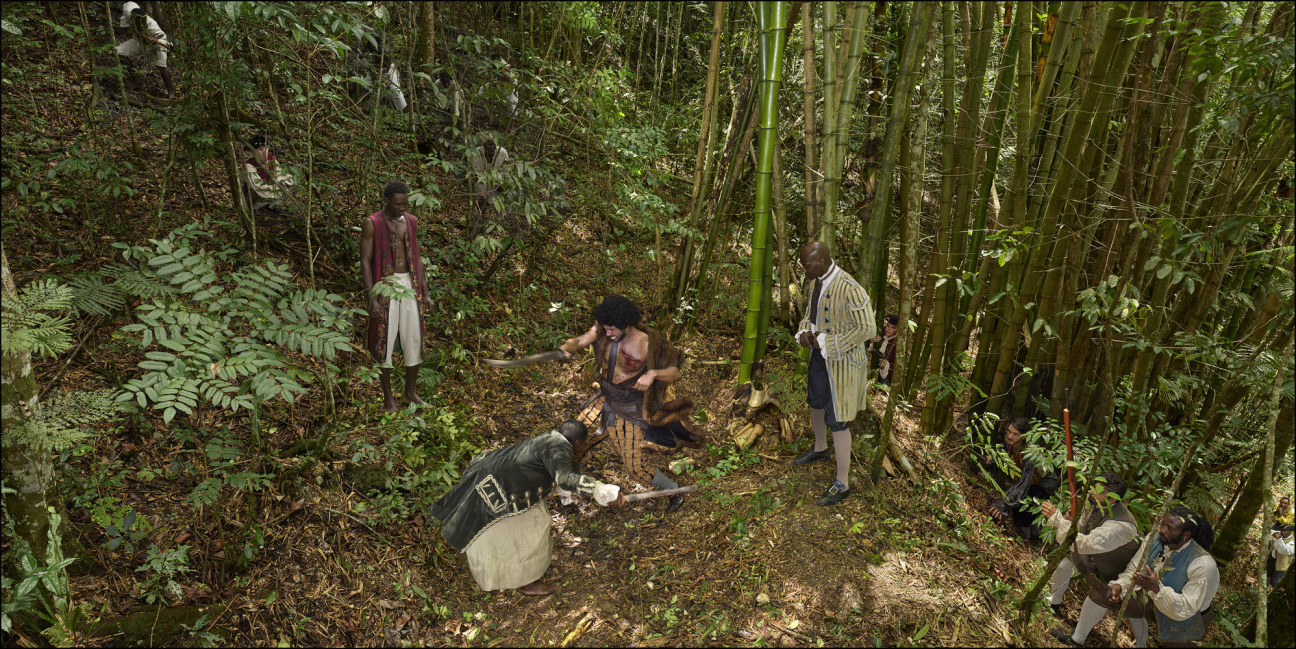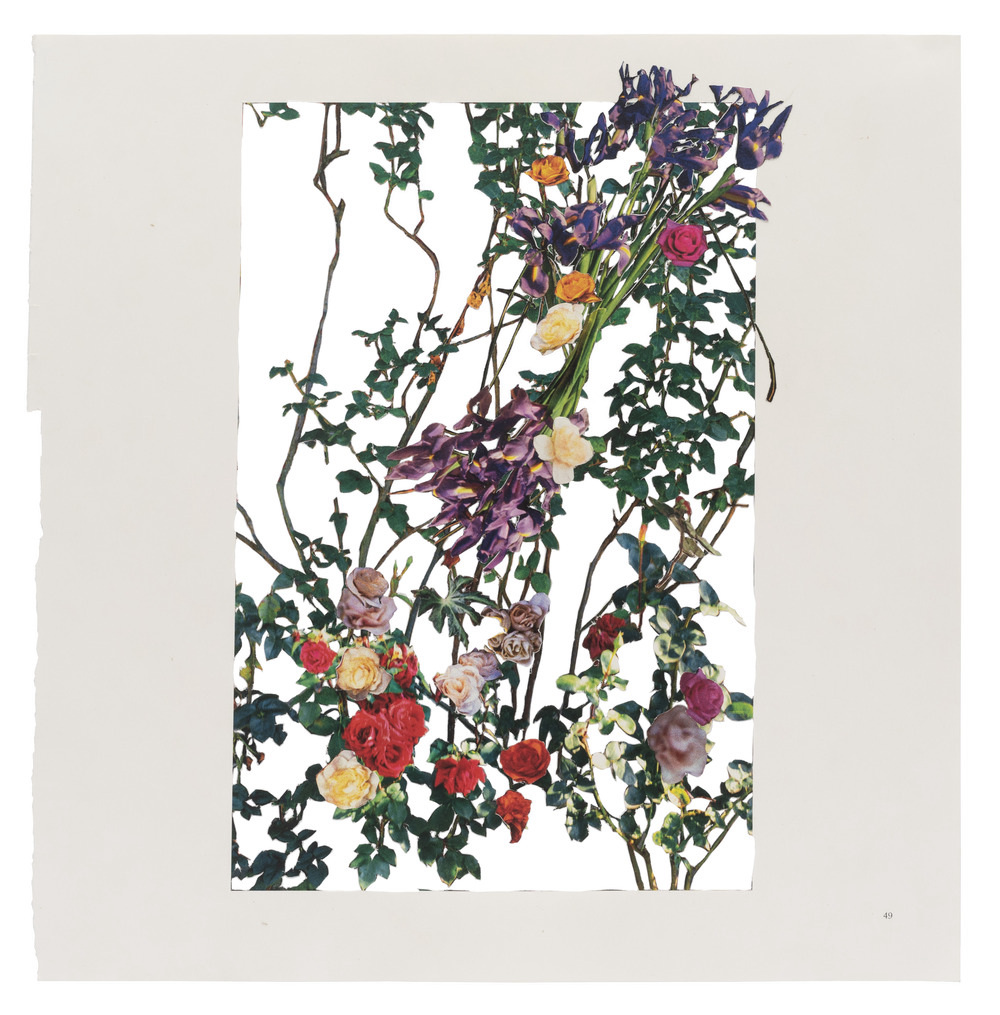
For our In Brief column, our critics sort through and select from New York's art offerings to present a group of short reviews that share a thread, theme, medium, or neighborhood. In this installment, CULTURED Co-Chief Art Critic Johanna Fateman looks beyond the glut of paintings on view in galleries now to find three, very different photography exhibitions. The search took her to East Williamsburg, Chelsea, and the Lower East Side.
Dietmar Busse
Amant | 315 Maujer Street, Brooklyn
Through February 16, 2025
For the artist-photographer Dietmar Busse, Manhattan is an enchanted isle, and each of his portrait subjects is the hero of a story—that’s one possible interpretation of his exhibition title “Fairytales 1991–1999.” Another might be that this from-the-vault parade of never-before-shown Polaroid images, shot during his first decade in New York (Busse grew up in a small village in Northern Germany), charts his own magical journey. Traveling by bicycle usually, using a heavy Polaroid 600SE camera (which he first tried out and fell in love with at the Meatpacking District rental studio where he worked), he photographed people he encountered, from the Chelsea Piers to Harlem, leaving one instant print behind with them as part of the exchange.
Among the 166 works on view there are images of a proud man holding aloft the fluffy white champion of a cat show; drag-queen stragglers after the Pride march; and two young women in a beauty shop, with unfinished hairstyles, striking a practiced pose. Often using a kind of black-and-white film from which a negative could be carefully extracted, Busse was not limited to producing pocket-size keepsakes. Lady Walking Her Dogs in Central Park (1995)—in which a baroness-type with kohl-rimmed eyes stands with two stately Russian wolf hounds, all three of them dressed up for Easter—is shown as a large-scale silver gelatin print. The grand work has a derelict elegance, curling off the wall, as though trying to free itself from its tacks. (Nothing here is framed.)
Busse’s early fashion work is also represented. This material is of a piece with the street photography, and it’s interesting to see the overlap of his dual practices. But, in “Fairytales,” bold-type names and professional models shine no brighter than the city’s unnamed stars. And it’s lovely to think that each off-the-cuff Polaroid of a stranger here has a lost twin, somewhere out there, in someone else’s archive.

Stan Douglas
David Zwirner | 525 West 19th Street
Through October 26, 2024
You might think you’d stumbled upon a group of beautifully produced stills from a rather unusual Masterpiece Theater period drama. The Canadian artist Stan Douglas, associated with the Vancouver School—a group of conceptual photographers, including Rodney Graham and Jeff Wall—presents, in his new exhibition “The Enemy of All Mankind,” nine photos (all from 2024) of exacting narrative density. His scenes are drawn from Polly, an 18th-century English comic opera by John Gay, set in the West Indies. Douglas finds treasure in its plot, which involves extended masquerades of race and gender against a political backdrop of British colonial culture and the slave trade on the one hand, and the stateless, racially mixed, freedom-seeking of pirates (the so-called “enemy of all mankind”) on the other. The show does not lend itself to nutshell summaries, but the title of one verdant image, almost five feet square, gives a sense of its scope and intrigue. Act II, Scene VI: In which the Wife of Pirate Captain Morano, Jenny Diver, Attempts to Seduce Polly, who is Disguised as a Man to Avoid Molestation features two small figures in an expanse of tropical landscape, in animated conversation. (Douglas chooses to represent most of the selected scenes with a moment of strife or negotiation.)
There are also two magnetic, unpeopled photos—not of the Polly-inspired series—included in the exhibition. They stand apart as revealing counterpoints. Ghostlight is a haunting panoramic shot of a dim theater, a single light illuminating its ornate, baroque-style interior—a reminder that Gay’s play was meant to be performed on stage. The other depicts a weathered boulder carved with the outline of the African continent. Douglas encountered it while shooting for “The Enemy of All Mankind” in the Blue Mountains of Jamaica, where Maroons, autonomous groups founded by those who escaped slavery, settled during the colonial period. The unstaged image, titled Africa Rock, functions as a kind of asterisk amid the artifice—the artist points out that often even the strangest fictions pivot around fact.

Justine Kurland
Dashwood Projects | 63 East 4th Street
Through November 11, 2024
The photographer Justine Kurland invokes The Society for Cutting Up Men, an apocryphal organization referenced in the 1967 pamphlet SCUM Manifesto by Valerie Solanas (the misandrist philosopher and would-be Warhol assassin) in a project of more moderate—or rather, symbolic—violence. With her ongoing SCUMB series, Kurland cuts up men’s books. For this exhibition, “SCUMB Flowers,” she takes as her target William Eggleston’s epic project The Democratic Forest, first published in 1989—a gorgeous, collectible, ten-volume set including more than one thousand images. Not immune to the super-saturated color and keenly observant pictures of the male photographer, nor to the scope of his achievement and the beauty of these books, I gasped slightly when I read of Kurland’s premise.
Her treatment of the photos is no mere slashing desecration, though. She meticulously excised every flower from Eggleston's pages to assemble new, hybrid compositions. The collages lining the walls of the narrow gallery evoke homemade valentine cards and the ladylike pursuits of scrapbooking and decoupage even as there’s something off-kilter, mischievously tangled, and absurd about the artist's lacy, floral and arboreal juxtapositions. Incongruities, such as when nosegay-like clusters of roses hover in the branches of trees, tip viewers off to the works’ conceptual underpinnings. And a new poem by Ariana Reines called “Theory of the Flower” accompanies a zine-portfolio of reproductions, published for the occasion of the show, adding another dimension to Kurland’s endeavor.
While the press release mentions a quip of Eggleston’s, to a curator, that his photos are based compositionally on the Confederate flag, “SCUMB Flowers” is not an “It’s Pablo-matic”-style take-down of an American legend. It seems more a personal exorcism of the patriarchal canon. After all, the books Kurland cuts up are from her own library, and in each collage here, her laborious, X-acto knife dissection of Eggleston’s work is a record of obsessive study as much as it is an act of destruction.










 in your life?
in your life?

